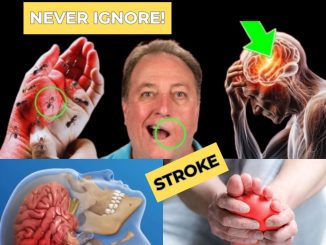Are you ready to put your observation skills to the test? The image above features two seemingly identical pictures, but don’t let that fool you. Hidden within these cozy bedroom scenes are exactly 18 subtle differences. At first glance, you might think they’re the same, but look a little closer and you’ll start to notice things that don’t quite match.
Before reading any further, take a good look at both images. Count how many differences you can spot on your own. Got your number? Great—now let’s explore why these puzzles are so challenging and how you can sharpen your skills to find every hidden detail.

Why Spot-the-Difference Puzzles Are More Challenging Than They Look
Puzzles like this are great for training your mind. They enhance concentration, improve visual memory, and help you pay attention to small details. But despite how fun they are, they can be deceptively tricky.
Many people make the mistake of rushing. They scan the image quickly and spot only the most obvious changes. The brain tends to focus on larger objects or things that feel out of place, which means it’s easy to miss tiny variations in color, shape, or position.
Another common mistake is assuming symmetry. People expect the images to mirror each other exactly, so the brain often “fills in the gaps” and overlooks real differences. That’s why slowing down and examining each area piece by piece can make all the difference.
Video : 🐢🧩 Spot 3 Differences | Brainy Fun Awaits 🧩🐢
Let’s Find the 18 Differences Step-by-Step
Ready for the reveal? Here’s a detailed breakdown of all 18 differences between the top and bottom images:
- The moon is visible through the window in the top image, but it’s missing in the bottom image.
- There are more stars in the top image than in the bottom one.
- The curtains are open in the top image but closed in the bottom.
- The cat has a red collar in the top image, but no collar in the bottom.
- The cat’s stripes are different between the two images.
- The woman is wearing a blue necklace in the top image, which is missing in the bottom.
- The flower in her hair is pink in the top image and blue in the bottom.
- The pillow pattern has purple dots in the top image, while the bottom pillow is plain.
- There is a framed picture on the wall in the top image that disappears in the bottom.
- The handle on the teacup faces left in the top image and right in the bottom.
- There is an extra cookie on the plate in the bottom image.
- A red apple is next to the cookies in the top image but gone in the bottom.
- The book on the bed is blue in the top image and purple in the bottom.
- The thumb position changes between the images—her left hand covers the spine in the top one.
- One of the dress straps is missing in the bottom image.
- The wrinkles on her dress are fewer in the bottom image.
- A lamp appears behind the bed only in the bottom image.
- The wall color is slightly different between the two images.

If you spotted all of these, congratulations! That’s a rare level of attention to detail. Most people stop at 8 or 10 and miss the smaller, trickier differences.
Tips to Improve Your Spot-the-Difference Skills
If you want to get better at puzzles like this, there are a few simple strategies you can try.
First, divide the image into sections. Instead of scanning randomly, go row by row or from left to right. Focus on the background, the character, the furniture, and the small objects separately.
Second, zoom in on unusual spots. The brain often skips areas that feel “complete,” so force yourself to examine even the simplest details.
Third, look for categories of changes. Many puzzles involve changes in shape, color, number, or missing elements. Knowing what to look for helps you train your eye to notice faster.
Finally, practice regularly. The more you do these puzzles, the faster and sharper your brain becomes at spotting inconsistencies.
How Many Did You Find? Share Your Score!
Now that you’ve seen all 18, how many did you catch on your own? Was it harder than you thought? Let us know your total in the comments and challenge your friends to beat your score. These kinds of games are perfect for friendly competition and a great way to stretch your brain on a break.
Video : 🐢🧩 Find The Difference | Puzzle Masters Only 🧩🐢
Tag someone who loves puzzles and see who among you has the best attention to detail!
Train Your Eyes and Boost Your Brain
This puzzle might seem like just a fun game, but it’s also a powerful mental exercise. Spot-the-difference games strengthen visual analysis, improve focus, and help develop the kind of attention to detail that benefits you in work, school, and everyday life.
So keep practicing. Whether you’re solving for fun or working to sharpen your mind, puzzles like these offer a fun way to challenge yourself—and maybe even surprise yourself with how observant you really are.
Next time you face two “identical” images, you’ll know better. There’s always something more to see if you look close enough.


